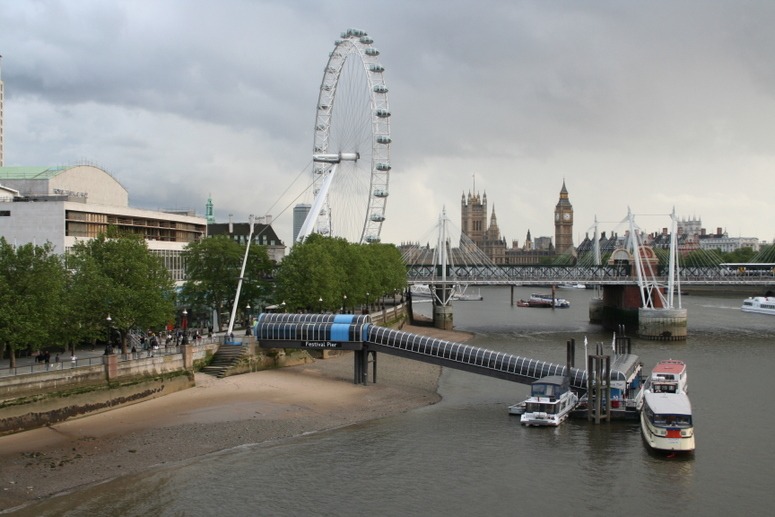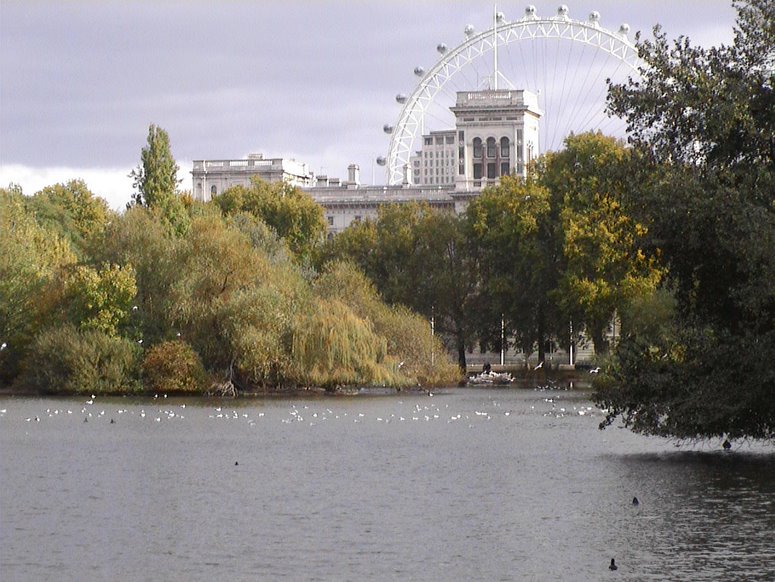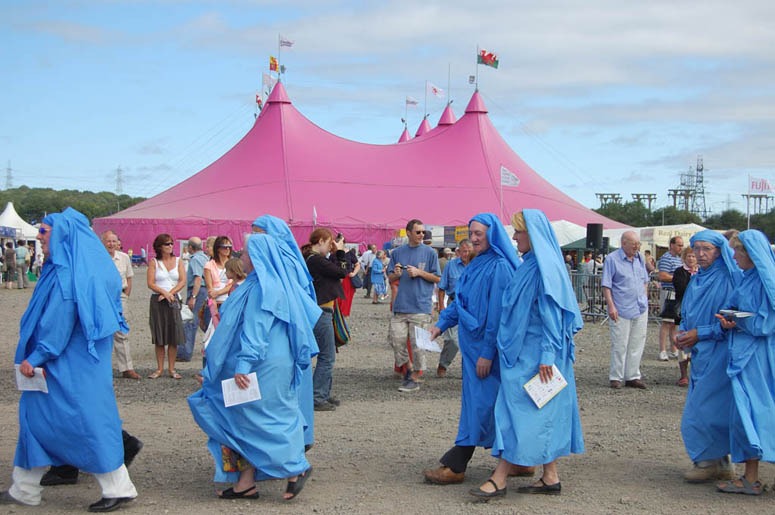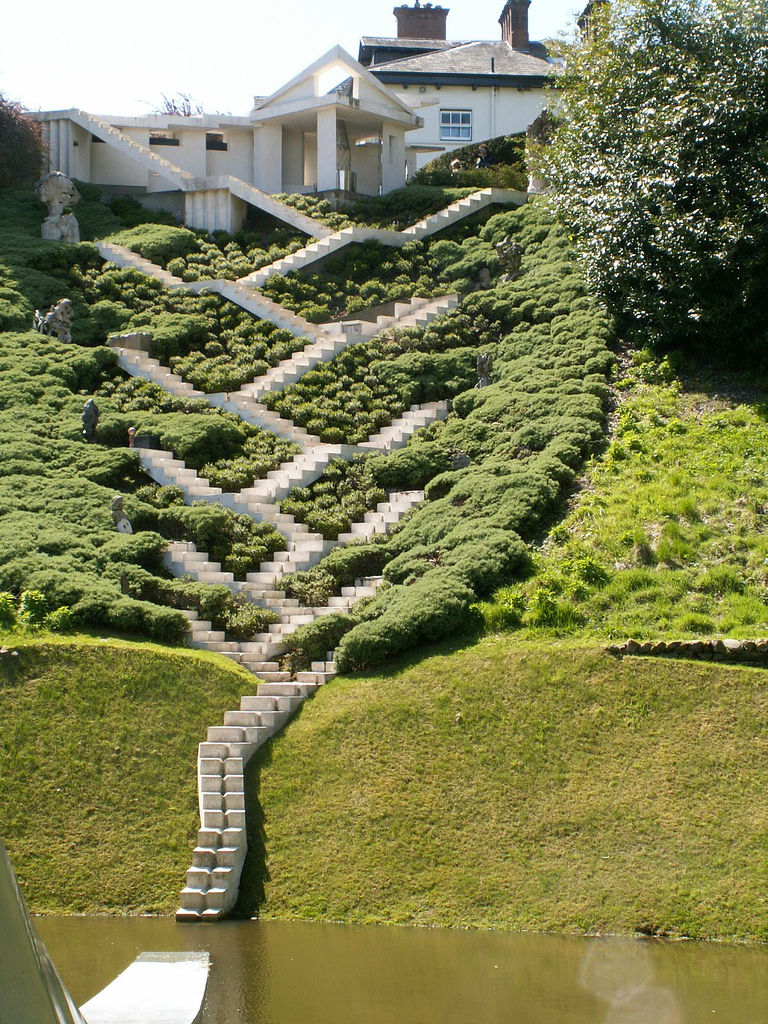Channel 4, in the UK, did a programme on Cothay Manor Garden this evening. Mr Alastair Robb (78) and Mrs Mary-Anne Robb (68) spend £40,000/year on running the house and only get £15,000 from opening the garden to the public. Mrs Robb said, rightly, that ‘most National gardens have lost their soul’ and that running the garden as the National Trust do would wreck its character. They have four children who say ‘we don’t want to spend every waking hour working, as you do’. But the parents gave the property to one of the children, to ‘keep it in the family’ and preserve their life’s work. Not all the other children were happy with this, understandably. Ruth, for Channel 4, suggests the solution re the income is to organize events (like sculpture exhibitions) to attract more visitors and make more money. I saw this tried in several gardens last summer, including Chatsworth, Hatfield House and Mellerstain, and thought the sculpture and the gardens did nothing for each other (or for the income at Cathay). Ruth also persuaded them to build a cafe-restaurant, which made the Robbs their first ever profit, with visitor numbers up from 5,000 to 15,000. Giving the property to one child, hopefully 7 years before the parents’ death, saves £1m in inheritance tax on a £3m property. Interesting.
Author Archives: Tom Turner
Is the Millennium London Eye a Good Thing or a Bad Thing?
Following in the footsteps of Britain’s most quoted historians (W. C. Sellar and R. J. Yeatman) we should ask: is the London Eye is a Good Thing or a Bad Thing?
- 30m people have ridden in the Eye (@ £17.5 each =£525m) and the owners pay the South Bank Centre £2.5m/year to rent a tiny strip of land. It thus enriches London and Londoners. This is a Good Thing.
- The London Eye makes Central London resemble a Theme Park: County Hall and the Palace of Westminster have lost their dignity and now resemble toys in a model village. This is a Bad Thing.
- The London Eye was originally given planning permission for 5 years but was then made permanent, thus enriching the owners at the expense of the public good. This was a Bad Thing.
On balance the London Eye is therefore a Bad Thing and Lord Rogers was wrong. He declared “The Eye has done for London what the Eiffel Tower did for Paris”. Lord Rogers is a decent architect but has little understanding or urban design and no understandisng of landscape architecture or geography. The Eiffel Tower does not dominate the historic core of Paris.
The London Eye should be moved downstream of Tower Bridge, to a site which would not be dwarfed by its scale (eg Chamber’s Wharf). It should also be hoisted by 30m (from 135 metres to 165 metres so that it is higher than the Star of Nanchang (160 m). This would be a Very Good Thing.
Anne Whiston Spirn and the language of landscape
Colin suggested adding Anne Whiston Spirn’s book on The language of landscape to the list of 100 Best Books on Landscape Architecture and I said I would re-read it. It is a good book, and as a commentary on a host of landscapes, it is inspirational. As a text on the theory of design, it is disappointing. The introduction (p.3) explains that ‘I was determined to write an entire book about the poetics of city and nature, one that would fuse function, feeling, and meaning’. But the word ‘poetics’ does not appear in the index and is not adequately explained in the text (though there is a reference to Aristotle but on urban planning). Wikipedia states that ‘Poetics refers generally to the theory of literary discourse and specifically to the theory of poetry, although some speakers use the term so broadly as to denote the concept of “theory” itself’. Spirn apparently uses poetics as a synonym for ‘theory’. But her book’s strength is in its observation and analysis, not its theory. She uses language and linguistic structure as analogies but (p.4) ‘places are my primary data’. Wikipedia also tells us that ‘A language is a system for encoding and decoding information’ with ‘The concept of information closely related to notions of constraint, communication, control, data, form, instruction, knowledge, meaning, mental stimulus, pattern, perception, and representation’. While not disputing the relevance of Spirn’s analogy, I believe it needs a great deal more theoretical analysis than it receives in her book. But thank you for the suggestion, Colin: I have put it on the list because far too few people give theoretical attention to landscape architecture.
Pythian Games and Olympic Games: culture and athletics
According to Wiki the Pythian Games at Delphi: “were founded sometime in the 6th century BCE, and, unlike the Olympic Games, also featured competitions for music and poetry. The music and poetry competitions pre-dated the athletic portion of the games, and were said to have been started by Apollo.’
So the relationship between the games at Delphi and Olympia equates to that between Athens and Sparta. Athens had a fine balance between cultural and physical prowess. Sparta cared only for the physical and military. So my proposal is to scrap the Olympic Games and replace them with a new series of Pythian Games – which should balance athleticism with cultural competitions, including poetry, music, oratory and dance. It is not so much that these activities have value: it is that mind and body are part of a single organism and we should not over-develop one at the expense of the other.
Or, since the language and culture of Ancient Greece was Indo-European and Central Asian in origin, perhaps we should re-form the Olympic Games on the basis of Celtic festivals. The Celts represent another great Indo-European tradition and we could look to the Highland Games in Scotland and the Eisteddfod in Wales. Anything would be better than the cynical, commercial, drug-taking body-damaging, militaristic, mindlessness tedium of the modern ‘Olympic movement’.
Photo of Eisteddfod courtesy Sara Branch
See also: 2012 Equestrian Olympics in Greenwich Park London
Charles Jencks Portrack Garden of Cosmic Speculation
Charles Jencks has been making the most interesting postmodern garden in Britain, with the Prince of Wales Highgrove garden as its only rival. Jencks, as the leading theorist of postmodernism, has the stronger theoretical base and I daresay there is not much to chose between the gardens with regard to resource costs. The Prince is the clear winner on sustainability grounds.
Apart from its striking visual character, the most interesting thing about Jencks Portrack garden is the way it carries forward the ancient project of making gardens which imitate (mimesis) the Nature of nature. Jencks seeks to understand the nature of the world, through science, and to embody the nature of the world in a garden design. The pharaohs, Plato, the emperors of China, Alberti, Capability Brown, William Robinson and Charles Prince of Wales had the same intention. The results differ because their understandings of nature differ.
One criticism I have heard of Jencks’ Portrack Garden is that he is too literal in his ‘imitations’ of physical and chemical laws, principles and formulae. While not seeing this as a fault, I agree with the observation. The alternative would be to use the revelations of science as Jencks’ renaissance predecessors used optics and mechanics to produce remarkable visual effects and devices in gardens. Outside the garden realm, one of the most dazzling examples of what might be done, from the nineteenth century, is the Foucault Pendulum, demonstrating the rotation of the earth. “The direction along which the pendulum swings rotates with time because of Earth’s daily rotation. The first public exhibition of a Foucault pendulum took place in February 1851 in the Meridian Room of the Paris Observatory. A few weeks later, Foucault made his most famous pendulum when he suspended a 28-kg bob with a 67-metre wire from the dome of the Panthéon in Paris. The plane of the pendulum’s swing rotated clockwise 11° per hour, making a full circle in 32.7 hours.” It is not too late to be making Foucault Gardens, Foucault-inspired gardens and other gardens inspired by a scientific understandings of Nature.
Prince Charles' Postmodern Garden Design for Highgrove
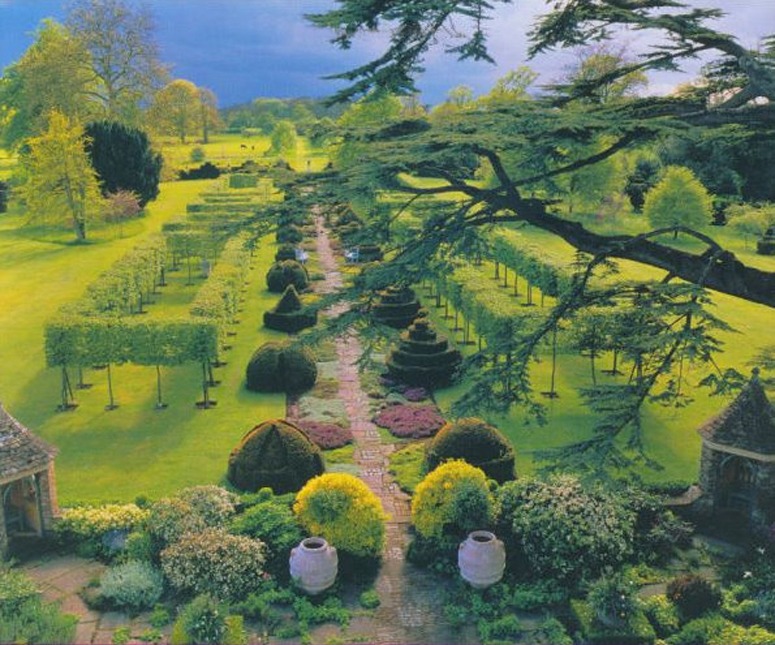
The cover of The Garden At Highgrove by the Prince of Wales and Candida Lycett Green illustrates the postmodern character of even the central vista (the cedar tree has since died)
Gods bless the Prince of Wales
I once wrote that ‘Royal leadership in the art of garden design began to decline after the accession of George I in 1714‘. His successors lacked the garden enthusiasm of their predecessors. No one could say this of Prince Charles. With talent and resources, he is making one of England’s great gardens. Should he become Charles III, as I hope, he will be the most talented garden designer ever to sit on the throne of England or Great Britian. He has substantial talents in garden design, landscape architecture and landscape painting. Charles is already The Green Prince. But will future historians state that ‘royal leadership in the art of garden design resumed when the Duchy of Cornwall bought Highgrove from Maurice Macmillan in 1980’? It is possible. But it is too early to judge. The Prince has, he tells us, put his soul into Highgrove. You can find a few images on the web and many in his book but unless you manage a visit, as I was lucky to do, you will not get a good idea of the garden. With 6 full-time gardeners and 4 part-time gardeners, it is a fast-changing and, as yet, a rather admirably untidy place.
I will try to put my analysis into the standard format of a design critic and teacher: classifying the approach, saying what is good, saying what is not so good, and making suggestions re ‘what could do with further thought’.
The style of the Highgrove garden
The house dates from the 1790s and the design theory underlying the garden dates from much the same time. Humphry Repton, who once worked for a Prince of Wales, would have strongly supported the use of a compartmented structure and, unlike Arts and Crafts compartments, they would have had design themes. I do not doubt that Repton would have approved the use of contemporary themes at Highgrove – and the view of Tetbury steeple from the front of the house is uncannily like a Reptonian sketch. But the visual character of Highgrove is uncompromisingly postmodern – to a far greater extent than the Abbey Garden in nearby Malmesbury by the brash postmodern developer-architect Ian Pollard. In detail, it may well be that Prince Charles has drawn inspiration from his annual visits to the Chelsea Flower Show and, perhaps, from Ian Hamilton Finlay’s Little Sparta and from the work of Geoffrey Jellicoe.
What’s good about the Highgrove garden design
The Prince has been very brave. His skill with pen and brush have educated a discerning eye and a creative imagination, able and willing to work as a patron for talented craftworkers. Individual compartments are highly experimental, with some notable successes and some requiring further thought. He also has a grand theme – sustainability- which, it must be hoped, will unite the compartments into what could become the greatest Postmodern Garden in Britain. At present Portrack, by Charles Jencks, is its chief rival.
What’s not so good about the Highgrove garden design
The Highgrove garden lacks spatial coherence. This flaw may be a consequence of its youth. But it may also result from the lack of a ‘master plan’ at the outset of the project. It is perfectly logical for a Postmodern garden to be without a master plan but its lack may diminish the eventual quality of the design.
Respectful suggestions for the Highgrove garden
I saw Highgrove in early autumn. It may be that a flowing springtime meadow, billowing around the geometrical core, gives more coherence. But I doubt if this would be enough, even though Miriam Rothschild advised on the composition and management of the wildflowers. My first suggestion to Prince Charles is to get some feint outlines of the garden plan printed onto the best watercolour paper and then to lay some washes to create a shape and a pattern for this space. My second suggestion is to give some more thought to the pedestrian circulation. This should be done first by user analysis (records of walks: by residents, visitors, staff, animals etc) to plot desire lines, and then by the Prince, if he can find the time, doing a series of quick watercolours to show views along a ‘processional route’ (ie a recommend route for visitors). They should be arranged in sequence and used as a design tool for future projects. Eventually, it might be found that they can be edited to tell a story.
PS I use ‘gods’ instead of ‘god’ in the heading for this post for several reasons (1) Prince Charles has stated his desire to be the Defender of Faiths, rather than Defender of the Faith (Fidei defensor), (2) many ‘gods’ appear to be respected and represented at Highgrove, (3) Christianity has not been a fruitful religion with regard to garden design.
PPS I also liked the Orchard Room designed by Charles Morris and consider Jonathan Glancey’s piece on A royal bungalow in the Tesco style bigoted.

